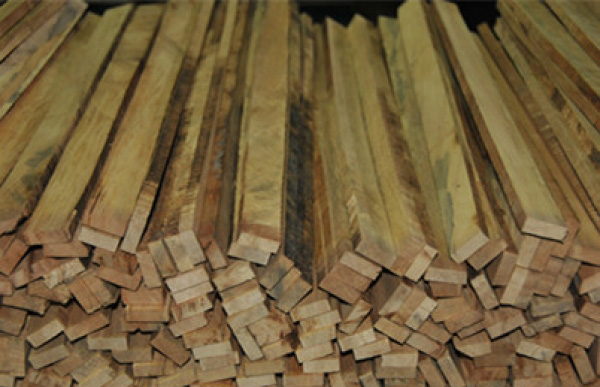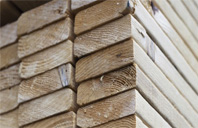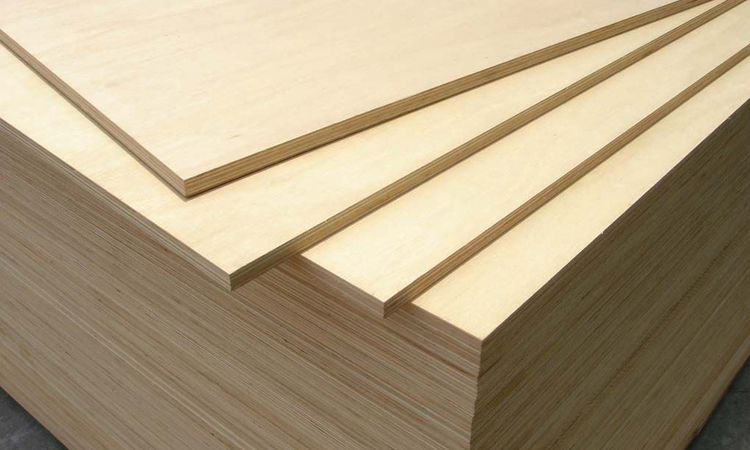Hardwood Species Review
There are thousands of hardwood species in the world, occurring naturally and also planted throughout the tropics and temperate regions. The choice of which hardwood to use depends on many factors, but mainly on one issue—fit for purpose. By Michael Buckley, World Hardwoods
Notwithstanding the question of availability as well as the responsibility to use only species not under any threat, there are so many hardwoods to choose from this should not be a problem, the real issue is only to select species that are ‘fit for purpose’. Failure to do so may be costly and counter-productive to the new universal understanding of why we need to use wood wherever possible and practical.
Wood is a carbon sink with low energy impact, negligible pollution, renewable and recyclable. We have no other material to match it, whatever the concrete and plastic people now tell us about their green credentials. So it is very important to choose hardwood species that perform and work well.

Hardwood and Softwood Differences
We should also understand the differences between hardwoods and softwoods which are entirely scientific. Hardwoods are angiosperms (relating to biological classification), broadleaved and either drop their leaves in the temperate winter or continuously in the tropics. Softwoods are gymnosperms that have needles, and with the exception of larch, do not drop. Their branches die and drop but not individual needles. The terms ‘hardwood’ and ‘softwood’ do not describe the wood as some hardwoods are very soft (balsa) and some softwoods are relatively hard (douglas fir).
However in general, softwoods grow fast and many hardwoods are slow grown. The exception is that some hardwood plantation species, such as acacia and eucalypts, may also grow very fast. This is important when understanding the characteristics of the wood we use. Teak is a good example as there is only one species (tectona grandis), unlike oak which has hundreds of variations. Teak grown naturally, as in Myanmar, displays a different grain to plantation teak, as in Java where it grows faster and produces more open grain.
While many environmentalists these days promote the benefits of plantation species, there are real benefits in well-managed natural forests, largely because many hardwoods are shade tolerant and do not need to be clear felled for the next planting, as softwoods do. So the selective felling of only mature trees in natural hardwood forests means less disturbance, greater bio-diversity and most important, allowing nature to decide on the most suitable species for any particular site, not man.
A good example of this is the US, which produces a huge percentage of the world’s commercial hardwoods without any planting. The forest in the State of Pennsylvania was almost destroyed by man overcutting from 1600s to 1900s, and then by forest fires raging for years in the first decade of the 20th century. The farmers then moved west, fields were abandoned and the forest re-established naturally by self-seeding. Today the forest covers about 70 percent of Pennsylvania State which is now the largest sawn hardwood-producing State in the Union.
Choosing Hardwoods
Undoubtedly, there are many other factors that influence the choice of hardwoods, not least the price and such issues as fashion in the key interior markets of furniture, flooring and joinery industry. Even with exterior uses, for which many hardwoods are suitable, there are choices and preference of colour, grain and general aesthetics, which sometimes override the more important issues of durability, strength and long-term performance.
There is one more issue of importance to many hardwood producers, designers, engineers, specifiers and users. Put simply, it is how to match the wood to the trees! Hardwoods are very variable in the way they grow, being tall and slim or fat and short. This determines the wood and sets the limits that any sawmill can supply.
So American tulipwood grows high and wide and its wood is available in long clear lengths and wide boards available. Whereas American Walnut grows shorter and long lengths are hard to get. European, Russian and Japanese oaks are generally less tall than American oaks so their sawn wood specifications differ.
This has real significance for users. In furniture, small items do not have to be restricted by tree size whatever the species, although even rubberwood is not available in long or wide specifications, making finger-jointing sometimes becomes a necessity. Teak however is usually available in long lengths but not necessarily in wide boards, and so it goes on. Therefore, the message sent to users here is to understand the relationship between hardwood trees and its lumber; or get close to suppliers who understand these manufacturing issues.
Hardwoods Grading
Linked to wood specifications are grading rules that can be very helpful in making the choice of which hardwood is fit for purpose. The Malaysian Grading Rules (MGR) are particularly useful for structural uses for the many medium and heavy hardwoods that are available throughout Peninsular Malaysia and Borneo, as well as for lighter hardwoods used in furniture.
European-wide grading rules do not exist, since countries like France and Germany have their own and often differ from mill to mill. The National Hardwood Lumber Association (NHLA) Grading Rules for American hardwoods, which are universally accepted in US and many Asian markets, are unique because they are based on yield prediction. So, for example, under MGR defects are cut out before grading and shipment, whereas NHLA Rules apply to full sized boards leaving cutting of defects to the end user, but predict yield.
In Asia there are native favourite hardwoods; teak is undoubtedly number one choice of species for joinery and construction, flooring and furniture, with its natural strength and durability to withstand fungal and insect attack due to its natural ingredients. This species is also widely planted in warm-climate countries where a distinct annual dry season occurs. Rosewood, now much diminished and less fashionable, was another favourite.
There is an enormous choice of naturally hardwood growing species, although now restricted, and in some cases such as Ramin, commercially unavailable in volume. The island of Borneo (Indonesia and Malaysia) offers the most extensive range of dipterocarpus and non-dipterocarpus species, including the meranti group of species in Asia. In plantations there are some key species available in volume, the most well-known being rubberwood and acacia, but there is much experimentation and research in other species. But as many companies are finding out, plantation success is easier said than done with such issues as soil conditions and diseases affecting results.
Outside Asia there are also favourites, of which beech is number one in Europe due to its extensive availability, and oaks due to widespread planting in countries like France. In Europe, over 75 percent of wood flooring is made of oak. Other species such as ash and cherry are spasmodic in their availability. In North America oaks, maples and tulipwood are among the most sought after species available in great volume, with ash, cherry and walnut regarded as fine hardwoods for furniture. All of these species are popular with international furniture and interior buyers in New York, London, Tokyo and other key markets, so they have relevance to Asian furniture exporters. The continents of Africa and South America also produce a fine and very extensive range of hardwoods, which takes us back to the issue of availability, mentioned at the start of this review.
Manufacturers will only engage with new or lesser known species (LKS) providing they are competitive and available. And by available, that means available on a consistent basis, without which mass production cannot live.That narrows the field in choosing hardwoods. So one ‘top ten’ list of hardwoods that meet this criterion might be: teak, oak, beech, meranti, maple, walnut, cherry, ash, tulipwood and mahogany.
Innovation and Certification
Technical innovation in wood is now centred on cross laminated timber (CLT) which may be regarded as still in its infancy but offering amazing new opportunities for wood in construction and engineering that is exciting architects. To date only softwoods have been used on any commercial scale, but work is going on exploring the possibilities for hardwood, following the success of the ‘Endless Stair’ project in London using tulipwood. This may be important for Asia, given its greater resources in hardwood than softwood. There is still a long way to go without any Asian-based production facilities yet—but watch this space.
Certification of hardwood forests is something of a sore point to many environmentalists. The original cry to reduce forest destruction was mainly a tropical rainforest issue that rose to prominence in the 1980s.Since then certification has been relatively easy in the northern hemisphere, where many softwoods and some temperate hardwoods are widely available certified, especially in Europe and US.
Tropical hardwood forests in Africa, South America and Asia have presented particular problems that have hindered progress so that very little hardwood forest is yet certified. Some forests are FSC certified and several countries in Asia have developed, or are developing, their own national certification schemes to be endorsed by PEFC, but it all takes time. These include China and meanwhile legislation on illegally sourced wood has been established in US, Europe and Australia, which requires due diligence as to legal sourcing. In order for wood to continue to take its proper place in the world’s array of building materials, hardwood certification may be the main challenge ahead, at least in Asia.





 沪公网安备31010402003309号
沪公网安备31010402003309号



